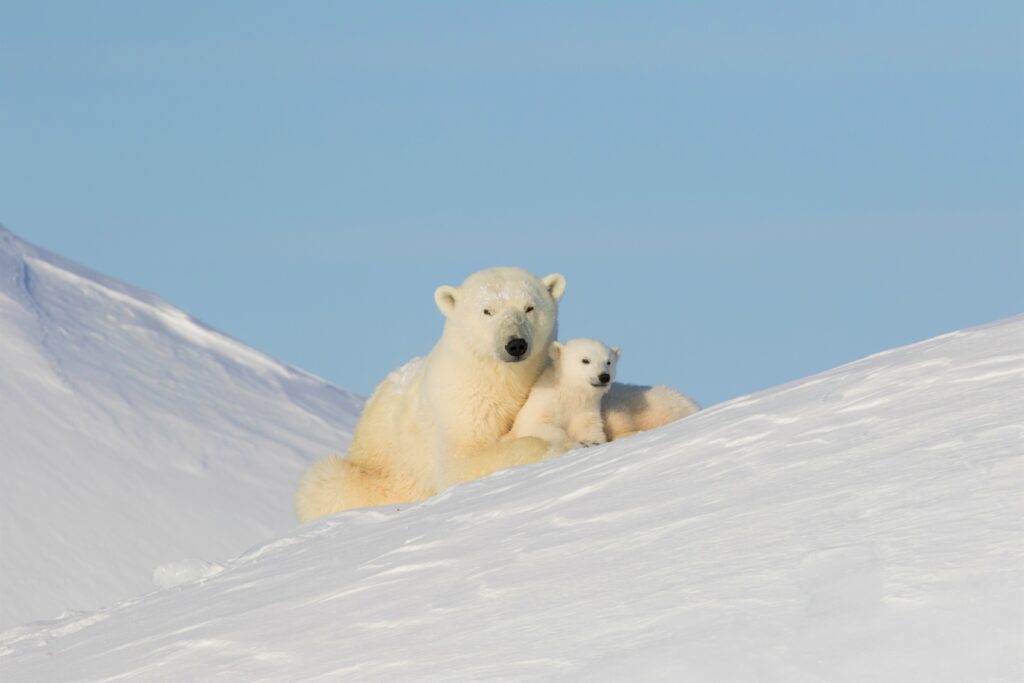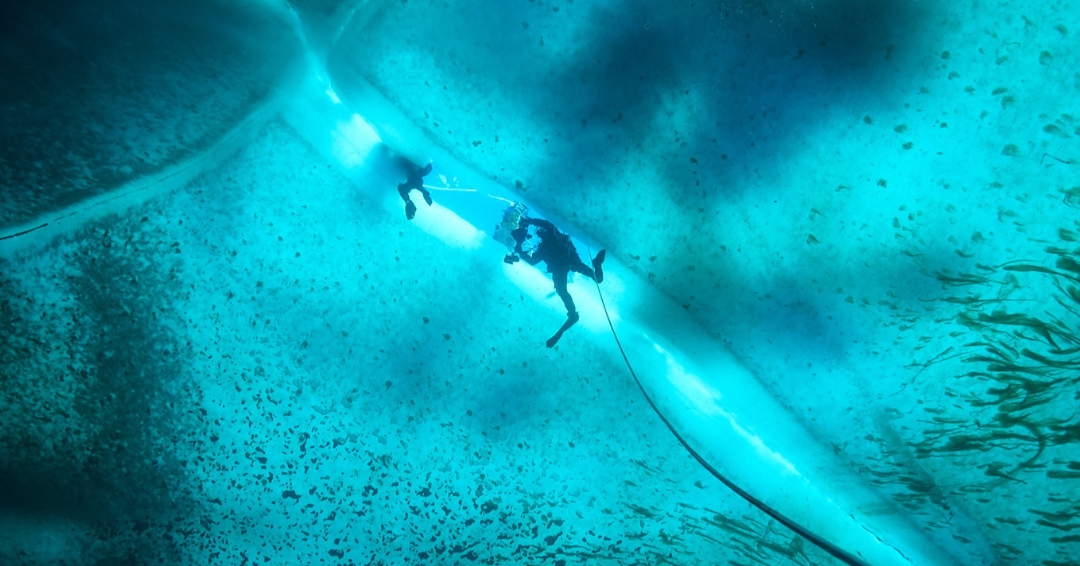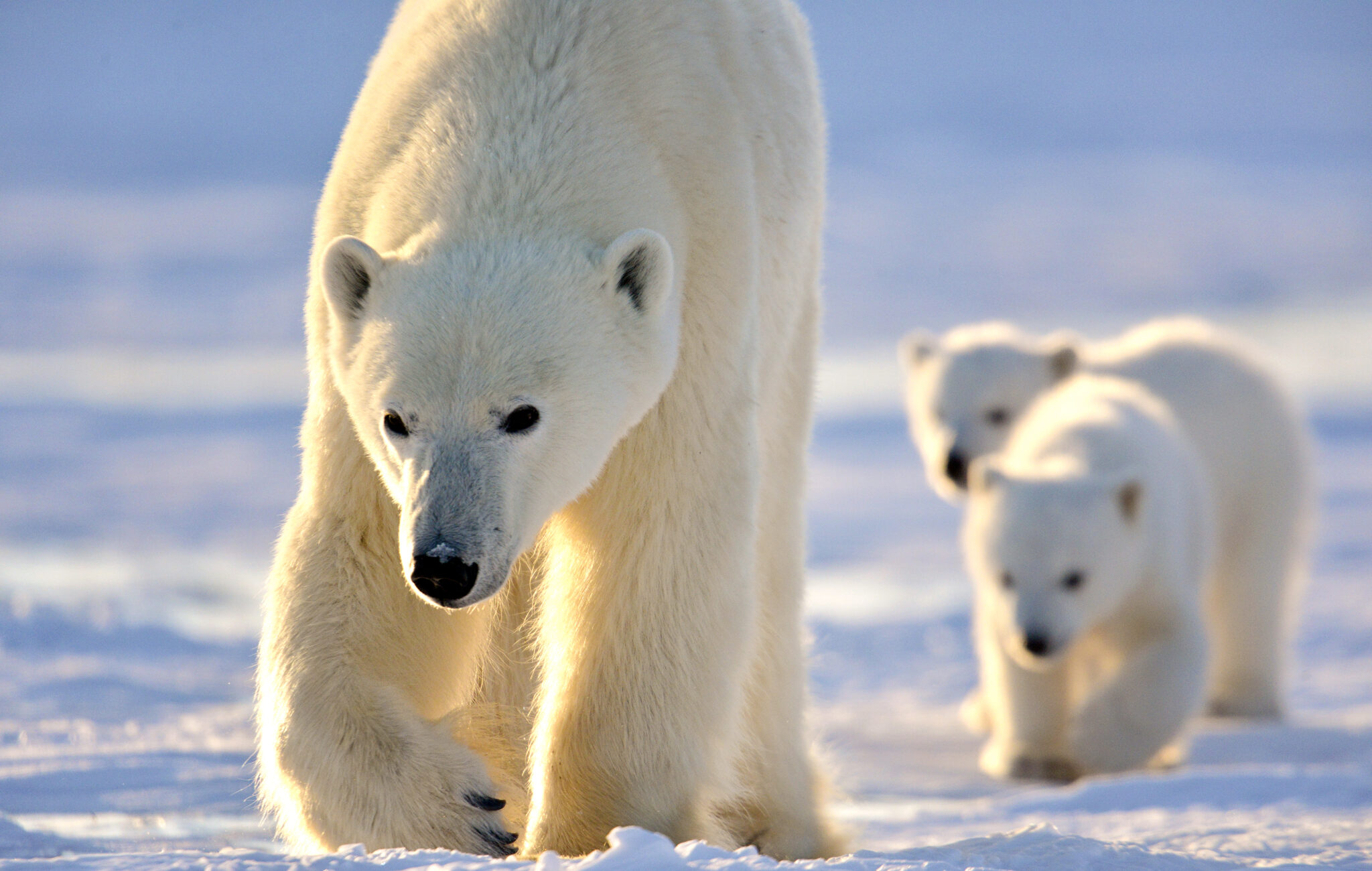Aside from the spectacular landscapes and unique wildlife, one of the top allures to the Arctic is the exclusivity. The Canadian Arctic is a place that few have experienced and there is so much to discover about this destination.
In honour of Alex Trebek, longtime host of Jeopardy!, joining Narwhal & Polar Bear Safari in June 2019, we’re answering some of the most popular questions asked the Arctic and travelling to the North.
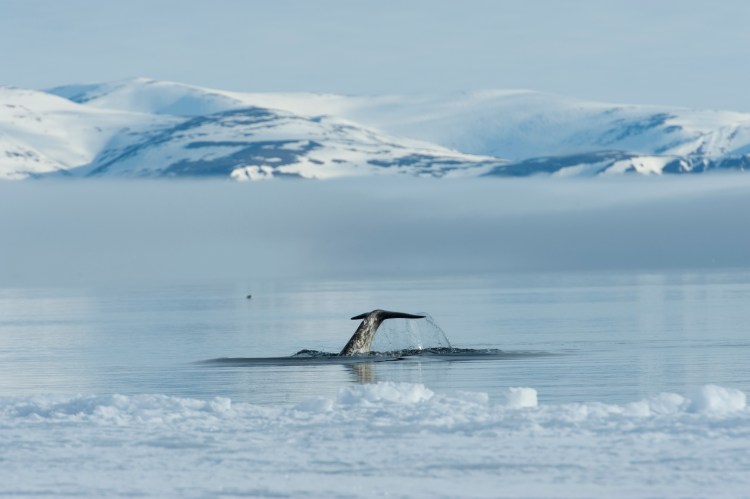
High Arctic Places
Q: This place is where the land-fast ice meets the Arctic Ocean and all marine mammals come to congregate in the spring.
A: What is the floe edge?
In May and June, the sun is constantly shining and the sea ice opens up, creating a dynamic ecosystem. Also called the “line of life”, the floe edge is one place where you can get chances to see all Arctic marine animals, including narwhal, beluga, polar bears, seals and more. The floe edge of Lancaster Sound is known as one of the most prolific wildlife areas in the Arctic.
Learn more about the floe edge:
Q: This stunning national park is located at the northern reaches of Baffin Island, Nunavut.
A: What is Sirmilik National Park?
Sirmilik meaning ‘place of glaciers’ in Inuktitut, offers spectacular landscapes that include mountains, icebergs and glaciers. You can access Sirmilik National Park via the gateway community of Pond Inlet, NU.
Learn more about Sirmilik National Park:
http://https://www.youtube.com/watch?v=ng6lmoNFaVk
Q: This sea route connects the Atlantic and Pacific Oceans through the Canadian Arctic Archipelago.
A: What is the Northwest Passage?
Explorers tried for over 300 years to discover a route from Europe to Asia through the Northwest Passage. While searching for Sir Franklin’s lost expedition, Irish adventurer McClure became the first to traverse the entire Northwest Passage in 1850. In 1906, the Norwegian explorer Roald Amundsen became the first to traverse the entire passage by ship.
Learn more about the Northwest Passage:
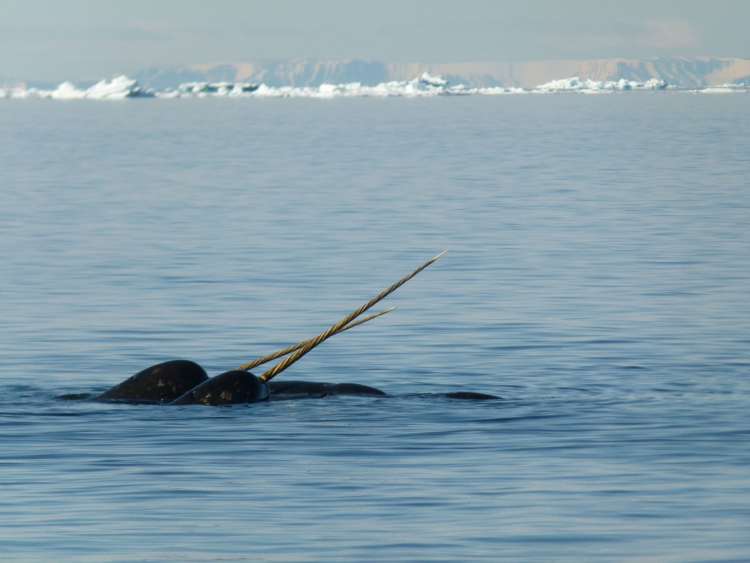
Arctic Wildlife
Q: This tusked Arctic whale is also known as the “unicorn of the sea”.
A: What is a narwhal?
Narwhal have never been successfully kept in captivity, the only way to see them is in the wild. Approximately 75% of the world’s narwhal can be found in the Canadian Arctic. One of the most reliable places to see them up-close is at the floe edge of Lancaster Sound in May and June.
Learn more about this mythical whale:
http://https://www.youtube.com/watch?v=iGxeqXWRS1A
Q: This Arctic animal is the world’s largest land carnivore.
A: What is a polar bear?
This Canadian Arctic is home to 60% of the world’s polar bear population. With opportunities to see this Arctic icon in Nunavut nearly year-round, there’s no better place for polar bear viewing!
Learn more about polar bears:
http://https://www.youtube.com/watch?v=kUZWSbjh3Ac
Q: This comical white whale has a round bump on their head called a “melon”.
A: What is a beluga whale?
Approximately two-thirds of all beluga summer in the Canadian Arctic. These remarkable whales are incredibly vocal, often called the “canaries of the sea.” They communicate using a diverse language of clicks, whistles, clangs, and can even mimic a variety of other sounds including human speech.
Learn more about beluga:
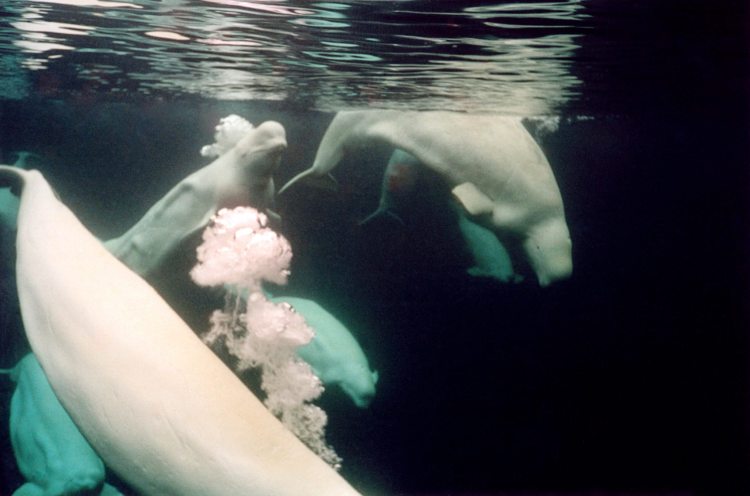
Seasons to Visit the Arctic
Q: At this time of year you get chances to see newborn polar bear cubs in the Arctic.
A: What is early spring (March & April)?
Polar bear cubs are typically born in December and stay in their dens until March or early April. Early spring is a great time of year to view them as they explore their new world. It is especially exciting to see them in Canada’s High Arctic at this time of year as you can get chances to see them on the sea ice and climbing icebergs. This offers incredible rare photography opportunities. Some of our guests on Spring Polar Bears & Icebergs of Baffin have even won awards for their polar bear cub photography!
Learn more:
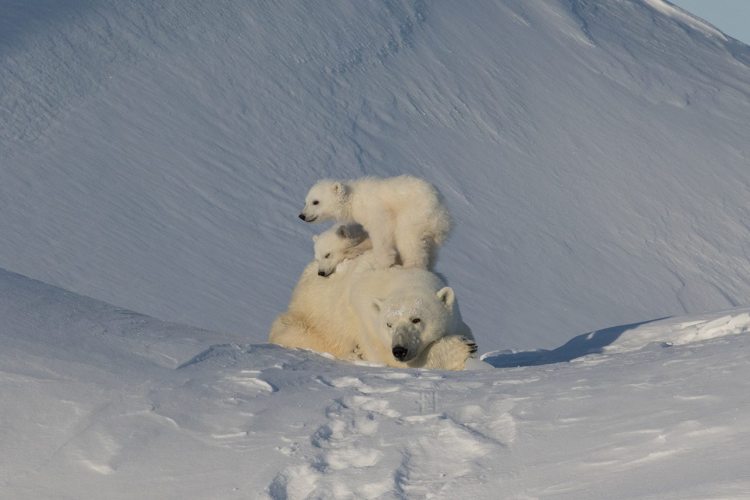
Q: These months are best for viewing narwhal at the floe edge.
A: What is May and June?
Floe edge season offers amazing opportunities to witness the migration of narwhal and beluga, as well as encounter polar bears and other wildlife in the High Arctic. Plus, the Midnight Sun is in full effect – with 24 hours of daylight – allowing uninterrupted opportunities for wildlife encounters as whales migrate towards their summer feeding grounds. The unique lighting of the Midnight Sun also makes for stunning photography.
Learn more about seeing narwhal in the wild:
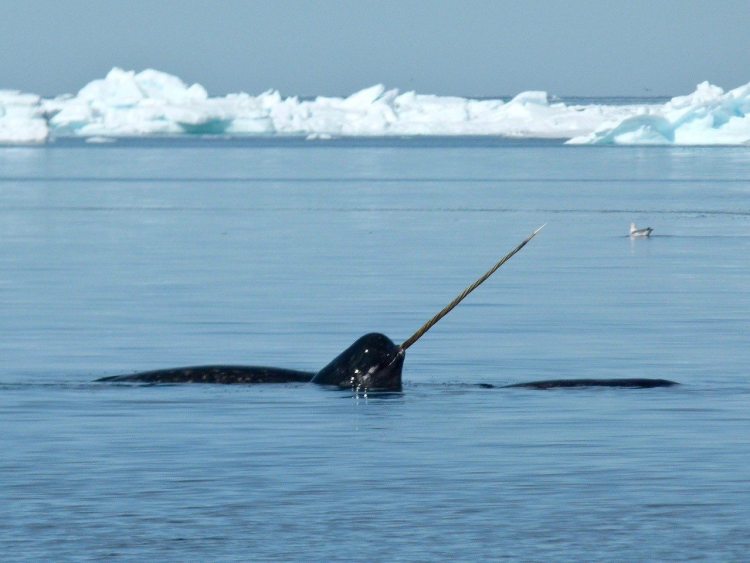
Q: This season offers polar bear and whale encounters in mild temperatures under the Midnight Sun.
A: What is summer (July & August)?
Summer in the Arctic is amazing for observing wildlife and taking in the breath-taking landscapes, all at a comfortable temperature. Temperatures can get up to 20°C (68°F) in August – hello t-shirt weather! At this time of year, you can get opportunities to explore by land and boat. Plus, the long days offer extended hours for fun in nature and wildlife viewing.
Learn more about summers in the Arctic:
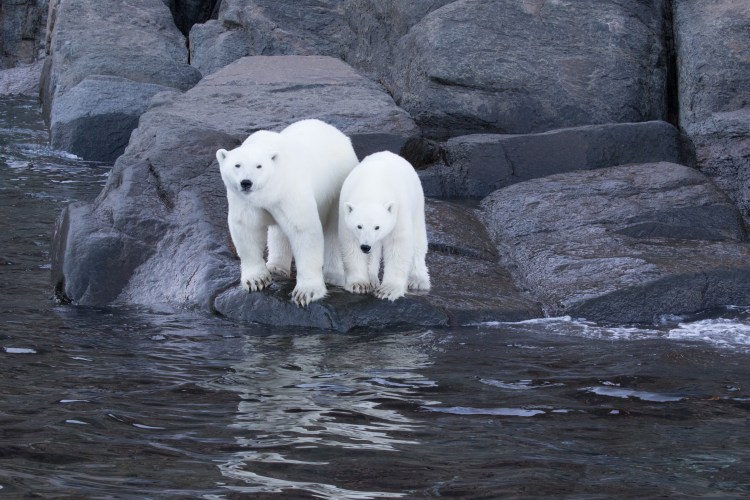
Q: At this time of year you can get unparalleled opportunities to view polar bears up-close from ground level, on the west coast of Hudson Bay.
A: What is autumn (October & November)?
In autumn, polar bears can be seen roaming remote tundra on the west coast of Hudson Bay in Nunavut, as they wait for ice to form on the bay. This area is incredibly reliable for up-close polar bear viewing in October and November, giving guests on Polar Bear Migration Fly-In Safari amazing opportunities for intimate polar bear encounters. Other wildlife opportunities include Arctic fox, Snowy Owl and more.
Double Jeopardy!
Q: This TV icon and Honorary President of The Royal Canadian Geographical Society will be joining Narwhal & Polar Bear Safari in June 2019.
A: Who is Alex Trebek?
A world-traveller and champion of geographic literacy, Alex Trebek invites you to join him on Narwhal & Polar Bear Safari. You can get the opportunity to explore Canada’s High Arctic for chances to see iconic wildlife with this Canadian celebrity on June 18 – 24, 2019.
Learn more about travelling with Alex Trebek on this life-altering fly-in adventure in the High Arctic here or contact us for more information.
http://https://www.youtube.com/watch?v=kUZWSbjh3Ac&index=4&list=PLEULOx1iZxlXMCnOANA9Szwk8lOfpJrAL
By: Mat Whitelaw


